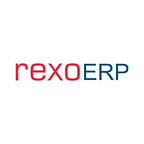Enterprise Resource Planning (ERP) software is a valuable investment for any organization that seeks to improve efficiency, productivity, and profitability. However, with any investment, it is important to evaluate the Return on Investment (ROI) to determine the financial impact of the ERP solution on the business. Calculating the ROI of an ERP solution involves considering various factors, including the cost of implementation, maintenance and ongoing costs, and benefits. In this article, we will explore how to calculate the ROI of your ERP solution.
Determine the Total Cost of Ownership (TCO) of the ERP Solution
The first step in calculating the ROI of your ERP system software solution is to determine the TCO. This includes the cost of licensing, hardware, and software, implementation, and training costs, and ongoing maintenance and support costs. It is important to account for all the costs associated with implementing the ERP solution to get an accurate picture of the investment.
Identify the Benefits of the ERP Solution
The next step is to identify the benefits of the ERP solution. These may include improved operational efficiency, reduced costs, improved data accuracy and accessibility, and better decision-making. It is important to quantify these benefits in financial terms to determine their impact on the business.
Calculate the Payback Period
The payback period is the amount of time it takes for the financial benefits of the ERP solution to equal the investment cost. To calculate the payback period, divide the TCO by the estimated annual financial benefits of the ERP solution.
Determine the Net Present Value (NPV)
The NPV is the current value of the future cash flows of the ERP solution. This takes into account the time value of money, which is the concept that money is worth more now than in the future due to inflation and other factors. To calculate the NPV, subtract the TCO from the present value of the future cash flows of the ERP solution.
Calculate the Internal Rate of Return (IRR)
The IRR is the rate at which the net present value of the ERP solution equals zero. This is a measure of the profitability of the investment. To calculate the IRR, use a financial calculator or software.
Evaluate the Results
Once you have calculated the ROI, payback period, NPV, and IRR, evaluate the results. A positive ROI, short payback period, high NPV, and high IRR indicate that the ERP solution is a good investment for the business. Conversely, a negative ROI, long payback period, low NPV, and low IRR may indicate that the ERP solution is not a wise investment.
In conclusion, calculating the ROI of your ERP solution is an essential step in determining the financial impact of the investment on your business. By considering the TCO, benefits, payback period, NPV, and IRR, you can make informed decisions about whether an ERP solution is the right choice for your organization. It is recommended that you work with a financial expert or consultant to ensure that your calculations are accurate and to guide you through the process.
